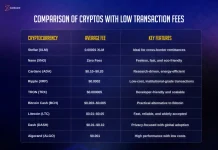Understanding the role of a graphic designer goes beyond creating visually appealing designs. A graphic designer is essentially a visual communicator, translating ideas and concepts into powerful visuals that captivate and convey messages effectively. They play a pivotal role in shaping the brand identity for businesses, as well as creating engaging experiences through various forms of media. A skilled graphic designer has an innate ability to understand the target audience and tailor their designs to resonate with specific demographics, ensuring the message is delivered with impact.
Moreover, the work of a graphic designer extends into multiple industries, from advertising and marketing to web design and print media. With technological advancements constantly reshaping the design landscape, graphic designers must keep abreast of the latest tools and trends to remain competitive in today’s market. The need for adaptability and innovative thinking underscores the indispensable nature of a skilled graphic designer in meeting diverse client requirements while maintaining relevance in an ever-evolving creative field.
Technical Skills: Proficiency in Design Software
Mastering design software is a critical technical skill for graphic designers. Proficiency in programs like Adobe Photoshop, Illustrator, and InDesign allows designers to bring their creative visions to life with precision and flair. These tools offer a wide range of capabilities, from photo manipulation and illustration to layout design and typography control, enabling designers to create visually stunning and impactful designs.
Moreover, the ability to efficiently navigate through complex software not only enhances productivity but also opens up new opportunities for experimentation and innovation. As the design industry becomes increasingly reliant on digital tools, staying ahead of the curve by mastering the latest design software is essential for remaining competitive in the field. With clients expecting high-quality deliverables in shorter timeframes, proficiency in design software is an invaluable asset that can set a designer apart from their peers and elevate their work to new heights of creativity and ingenuity.
Creativity: Ability to Generate Unique and Innovative Designs
Creativity is the lifeblood of graphic design, as it encompasses the ability to generate unique and innovative designs that captivate and inspire. Beyond simply using existing templates or trends, a truly skilled graphic designer can create fresh and original concepts that stand out in a crowded marketplace. This skill allows them to think outside the box, push boundaries, and deliver impactful visual communication that resonates with audiences on a deeper level.
Moreover, the capacity to generate unique and innovative designs is not just about artistic prowess; it also involves problem-solving and critical thinking. A talented graphic designer can take complex ideas or messages and distil them into visually compelling representations that communicate effectively. This multidimensional approach to creativity sets great designers apart from their peers, allowing them to consistently produce work that is not only aesthetically pleasing but also strategically sound. In an increasingly competitive market, this ability becomes crucial for meeting the demands of clients who seek designs that are not just visually beautiful but also uniquely tailored to their brand identity.
Communication: Effective Client and Team Interaction
Effective communication is the backbone of successful client and team interaction for graphic designers. Clear and concise communication helps to ensure that everyone involved in a project is on the same page, reducing misunderstandings and improving overall efficiency. It’s crucial for graphic designers to actively listen to their client’s needs and ideas while also articulating their own thoughts and design concepts effectively.
Moreover, building strong interpersonal relationships through open communication fosters trust and collaboration within a team. By providing regular updates, seeking feedback, and addressing concerns promptly, graphic designers can create a positive working environment that encourages creativity and innovation. Embracing various communication channels such as video calls, emails, or instant messaging allows for seamless interactions with both clients and team members regardless of geographical location, enhancing the overall workflow of design projects.
Time Management: Meeting Deadlines and Managing Projects
Time management is a critical skill for graphic designers who are tasked with meeting deadlines and managing multiple projects simultaneously. With the dynamic nature of the design industry, mastering time management can be the key to success in delivering high-quality work on time. Effective time management enables designers to prioritize tasks, allocate resources efficiently, and maintain a balanced workload.
Meeting deadlines requires not only good planning but also the ability to adapt to unexpected changes or setbacks. By incorporating project management principles into their workflow, graphic designers can streamline processes, set clear milestones, and mitigate bottlenecks that could derail a project’s timeline. Additionally, using tools like project management software and Gantt charts can help visualize project timelines and allocate time accordingly, ultimately ensuring that deadlines are met consistently.
In today’s competitive design landscape, honing time management skills is essential for staying ahead of the curve. By optimizing their workflow and embracing efficient time allocation practices, graphic designers can not only meet client expectations but also foster a reputation for reliability and professionalism in delivering projects on schedule.
Adaptability: Keeping Up with Industry Trends and Changes
Adaptability is a crucial skill for graphic designers to keep up with the ever-evolving industry trends and changes. In today’s fast-paced digital world, technology and design tools are constantly being updated, new techniques are emerging, and design trends are shifting. To stay relevant, graphic designers must be adaptable and open to learning new skills. This could involve mastering new design software, understanding the latest web design standards, or keeping up with evolving user experience (UX) principles.
Furthermore, adaptability allows graphic designers to embrace change and seek opportunities for growth within their field. By staying agile and willing to pivot when necessary, designers can position themselves as valuable assets in a highly competitive industry. Additionally, an adaptable mindset enables them to quickly respond to client needs and market demands, ensuring that their work remains fresh, innovative, and aligned with industry best practices. Ultimately, by actively embracing the fluid nature of design trends and technologies rather than resisting them, graphic designers can maintain their relevance and drive continued success in their careers.
Conclusion: The Ever-Growing Demand for Skilled Graphic Designers
In conclusion, the demand for skilled graphic designers continues to grow as businesses seek to establish stronger visual identities in an increasingly competitive market. With the rise of digital media and online marketing, the need for professionals who can effectively communicate through visuals has never been more critical. Furthermore, as technology evolves rapidly, graphic designers must stay abreast of new tools and trends to remain relevant and competitive in their field.
Moreover, the expanding realm of graphic design & user experience (UX) and user interface (UI) design has created a niche that requires specialized skills, making experienced graphic designers even more sought after. The ability to craft compelling visual narratives that not only look aesthetically pleasing but also function seamlessly within digital interfaces is a skill set that is becoming increasingly valuable in today’s design landscape. As such, the continued growth in demand for skilled graphic designers reflects the industry’s recognition of their pivotal role in shaping brand identity and consumer engagement across various platforms.







